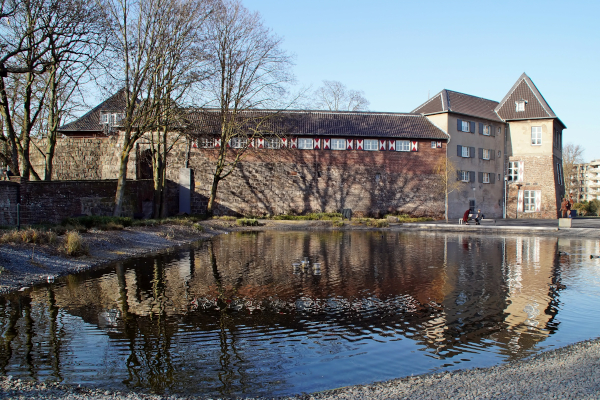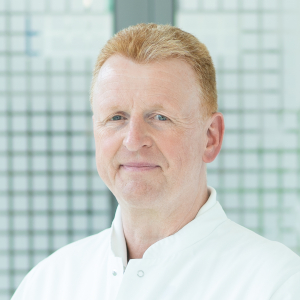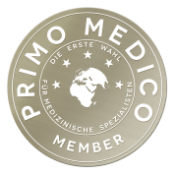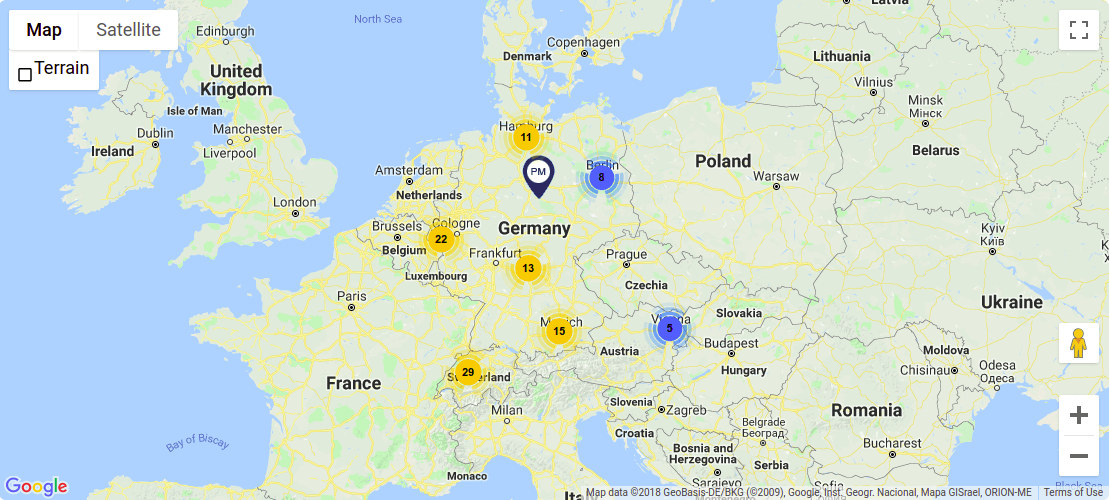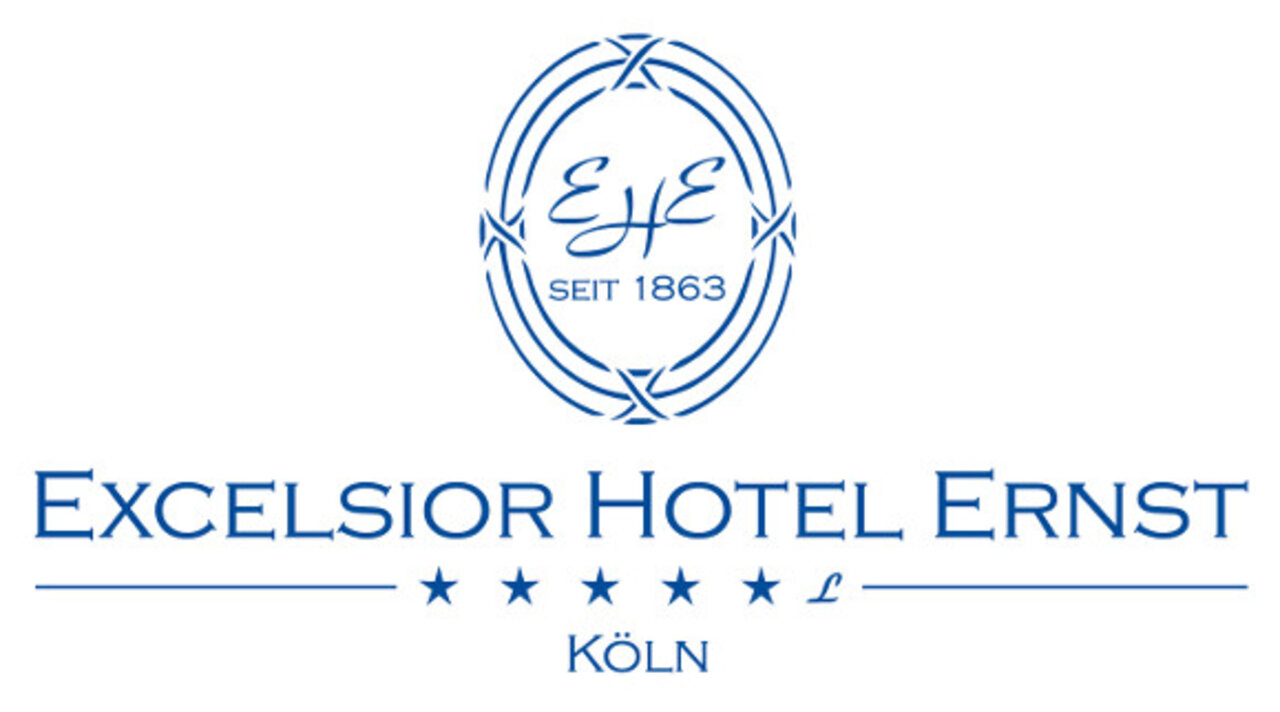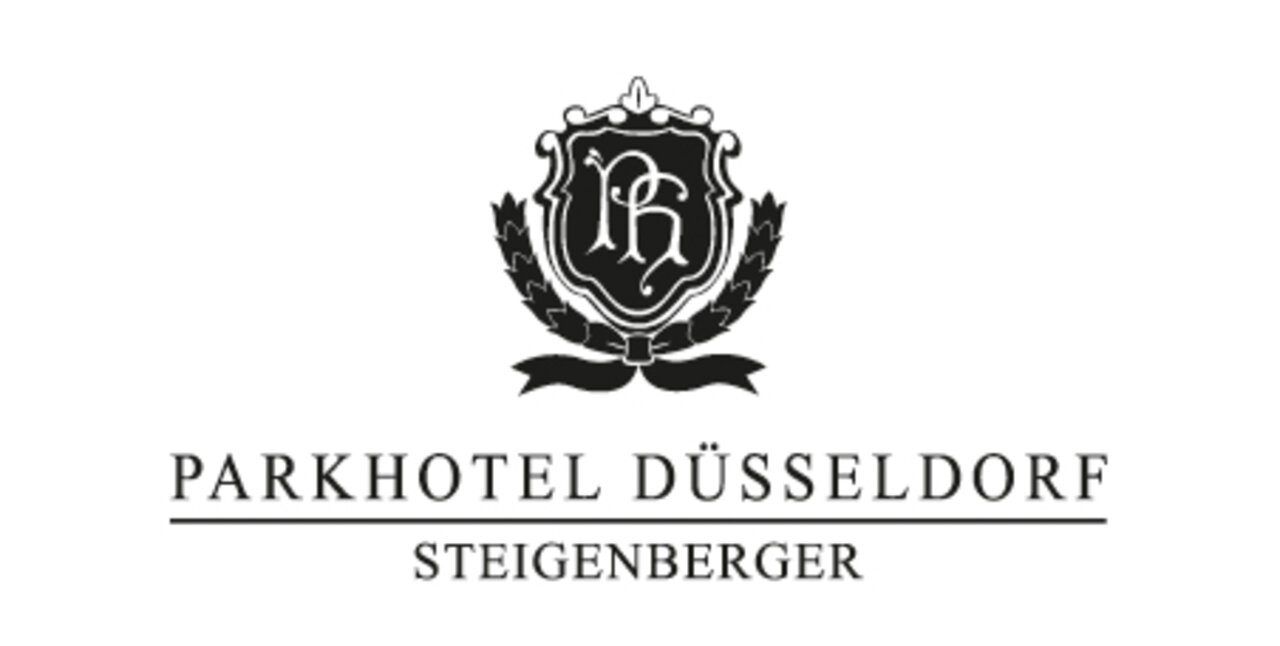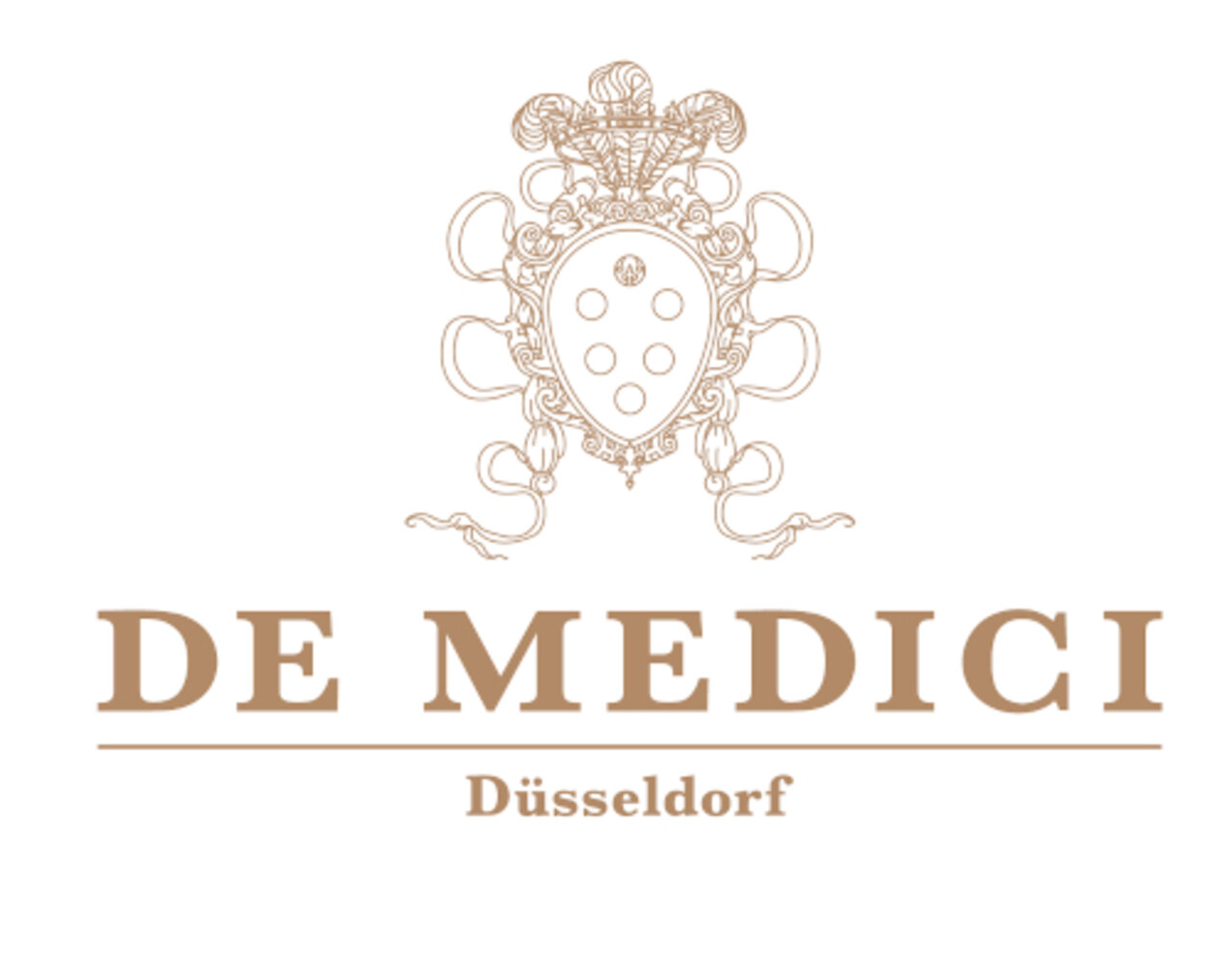Endoprosthetics Dinslaken (NRW): Dr Schmitz
Treatment focus
- Knee replacement
- Hip replacement
- Revision surgery for hip replacements
- Knee joint revision replacement
- Foot joint replacement (toe joint replacement, upper ankle joint replacement)
Contact
Evangelisches Krankenhaus Dinslaken
Clinic for Orthopedics and Trauma Surgery
Kreuzstraße 28, D-46535 Dinslaken
P: +49 2064 749 9844 F: +49 2064 42 2352
Consultation Hours:
Monday-Thursday: 8.00 AM to 3.30 PM
Friday: 8.00 AM to 12.30 PM
by appointment

Medical Range
Range of Therapeutic Services
- Knee replacement
- Partial knee replacement (condylar replacement)
- Arthroscopic knee joint surgery
- Arthroscopically guided cruciate ligament replacement surgery
- Cartilage replacement surgery on the knee joint
- Meniscus surgery
- Hip arthroplasty (standard stem, short stem)
- Minimally invasive hip replacement surgery
- Resurfacing arthroplasty (cementless and cementable version)
- Arthroscopic, joint-preserving hip surgery
- Hip constriction syndrome
- CAM or pincer impingement hip
- Cartilage damage hip
- Minimally invasive rotator cuff reconstruction
- Shoulder impingement syndrome
- Toe joint replacement
- Upper ankle joint replacement
More Information
Card
Dr Jürgen Schmitz is a specialist in endoprosthetics and head physician at the Clinic for Orthopedics and Trauma Surgery at the Evangelisches Krankenhaus Dinslaken.
Focusing on artificial joint replacement of all large joints, Dr Schmitz and his team treat patients individually according to their clinical picture using the most modern and proven treatment concepts. The focus is always on the individual.
Artificial Knee Joint: Outstanding Expertise in Knee Endoprosthetics
The knee joint is the largest in the human body and is frequently affected by injuries such as tears to the cruciate or collateral ligaments or even the cartilaginous menisci. As a result of such an injury or as a natural sign of aging, many patients experience a degenerative change in the knee, known as osteoarthritis of the knee.
If the symptoms of this condition, in particular pain on exertion and later also pain at rest and restricted movement, can no longer be successfully treated conservatively, replacing the damaged knee joint with a prosthesis may be a recommended option.
A distinction is made between a prosthesis that only replaces part of the joint, such as a condylar prosthesis for one of the two condyles of the femur, which, together with the joint surface of the tibia, form the knee joint, and total endoprostheses, in which the entire joint surfaces are replaced.
A surgical procedure is required to insert the prosthesis. This surgery can be carried out under general anesthesia or spinal anesthesia, in which the sensation of pain in the legs is temporarily switched off. The surgeon opens the skin, removes the remaining joint cartilage and superficial parts of the bone, and corrects misalignments.
The prosthesis can be anchored in the bone using either bone cement or the "press fit" method, in which the roughened surface of the prosthesis serves as contact with the bone structure.
At the Evangelisches Krankenhaus Dinslaken, prostheses that guarantee minimal loss of bone substance and a high degree of movement after the surgery are used. As the individual components are modular, the prosthesis can be adapted to the respective joint in the best possible way.
Hip Joint Replacement: Modern and Individual Hip Replacement at the Dinslaken Location
The hip joint is also frequently affected by degenerative processes. A hip endoprosthesis is often recommended in cases of pronounced hip arthrosis and femoral neck fractures, particularly in older people.
To avoid blood loss, which is often relevant in the open implantation of hip prostheses, the surgery at the orthopedic and trauma surgery clinic under the direction of Dr Schmitz is primarily carried out minimally invasively. This newer surgical technique requires unique expertise and, in addition to less blood loss, ensures faster mobilization and a shorter hospital stay after the surgery.
The hip prostheses are also individually adapted to the patient's anatomy. Preference is given to prostheses with an exceptionally long service life, according to the EPRD (Endoprosthesis Register Germany).
Experienced Endoprosthetics Specialist for Revision Surgery for Hip Replacement
A particular focus of orthopedics and trauma surgery at the Evangelisches Krankenhaus Dinslaken is carrying out revision surgeries or replacement surgeries for endoprostheses.
A hip endoprosthesis is said to have undergone a revision when, after around 15-30 years, unavoidable signs of wear and tear have occurred, and the prosthesis needs to be replaced.
If the prosthesis needs to be replaced due to a complication, the procedure is referred to as a revision. A revision must be carried out, for example, if the prosthesis becomes loose, if the artificial hip joint becomes infected with bacteria, if the prosthesis is misaligned or unstable, or if one of the bones to which the prosthesis is attached fractures.
Depending on the indication for the revision, either the entire prosthesis or only parts of it are replaced. The prosthesis can be optimized; for example, coupled joint parts provide more excellent stability.
As replacing or revising a hip endoprosthesis is a much more complicated procedure than initial implantation, it should only be carried out in a clinic with special experience in this area, such as the Evangelisches Krankenhaus Dinslaken.
Knee Prosthesis Replacement Surgery: Complex Revision Surgery for Knee Joint Prostheses
At around 10-20 years, knee joint endoprostheses have a slightly shorter average lifespan than hip endoprostheses. In addition, complications can also make revision necessary in the knee joint, which occurs in around 8% of all primary total knee replacements.
As with the hip joint, replacement and revision procedures take longer and are more complicated than initial implantations of full or partial prostheses. Therefore, they should only be carried out by an experienced surgeon.
Arthroscopies: Minimally Invasive Joint Surgery for Diagnosis and Treatment
Arthroscopies of the shoulder, knee, and hip joints are carried out in the orthopedic and trauma surgery clinic under the direction of Dr Schmitz. These are minimally invasive procedures in which a camera probe is inserted into the affected joint to visualize pathologies within the joint.
The damage can often be repaired directly during arthroscopy using special instruments.
The surgeries that are carried out arthroscopically at the Evangelisches Krankenhaus Dinslaken include, for example
- Rotator cuff reconstruction - Four muscles form the rotator cuff and stabilize the shoulder joint. For example, these muscles and their tendons can be injured due to an impingement or shoulder dislocation. To restore the joint's stability, the rotator cuff should be reconstructed.
- Treatment of acute hip injuries - For example, cartilage or ligament injuries caused by an accident can be treated arthroscopically. If it is not possible to preserve the joint, an endoprosthesis can even be implanted in a minimally invasive procedure in many cases.
- Cruciate ligament plastics and meniscus surgery - Cruciate ligament and meniscus tears are common sports injuries but can also occur due to traffic accidents. Such injuries can be treated arthroscopically.
Compared to open joint surgery, patients experience less pain and faster healing after arthroscopy, allowing them to return to their everyday lives sooner.
You will find more information on the Clinic for Orthopedics and Trauma Surgery website.
Team
- Dr Mark Albracht, MHBA
Senior Physician in Charge - Dr Thomas Rungweber
Senior Physician in Charge - Kersten Brenner
Senior Physician in Charge - Maen Shawahneh
Senior Physician - Dimitrios Oikonomou
Senior Physician - Farzad Kasseb
Senior Physician
Transport Connections
| Duisburg Main Station | 18 km |
| Essen/Mühlheim Airport | 32 km |
| Düsseldorf Airport | 39 km |
| Cologne/Bonn Airport | 88 km |
Information about Dinslaken
Dinslaken is located northwest of the Ruhr area in North Rhine-Westphalia and has about 70,000 inhabitants. The old town and its historic buildings are an attraction for visitors. Dinslaken Castle was rebuilt after severe damage during World War II and serves, among others, as the city's town hall today. The Burgtheater Dinslaken - an open-air stage that serves as a regular venue - is located next to it.
